Fashion is a rain coat l Blizzand

René Gruau
It’s Haute Couture time… Let’s get back to fashion basics. They’re not so far from each other.
Marcel Boussac was a huge and wealthy French textile businessman in the first part of the 20th century. Someone a bit like Bernard Arnault today. Boussac is actually known for having financed Christian Dior in 1946. He made his fortune in the coton industry when after World War I he bought from the Allied armies a stock of aircraft canvas and turned it into pyjamas. He then launched the shops À la Toile d’Avion. Just like Bernard Arnault, Marcel Boussac developed partnerships with artists. In 1934, the illustrations of À la Toile d’Avion famous catalogue was signed by Kees van Dongen. Boussac was also the owner of an iconic raincoat brand called Blizzand. All over the years, the beautiful advertising campaigns were signed by René Gruau. The Royal Blizzand was an incredible and very innovative basic item designed to walk, dance and sing in the rain. Made from tergal material in the manufacture of Blainville, in Normandy, the Blizzand coats were fully waterproof. It was so performing that the olive green version was selected for the French army officers before more colors and even prints win over new customers, led by celebrities. The Blizzand raincoat was a best-seller in the Galeries Lafayette. Some are still available today on vintage platforms such as Vinted or Etsy in military, classic or even fancier versions.
So chic anyway.
Campagnes publicitaires Blizzand par Réné Gruau :
![]()
![]()
![]()
![]()
![]()
![]()
![]()
Marcel Boussac was a huge and wealthy French textile businessman in the first part of the 20th century. Someone a bit like Bernard Arnault today. Boussac is actually known for having financed Christian Dior in 1946. He made his fortune in the coton industry when after World War I he bought from the Allied armies a stock of aircraft canvas and turned it into pyjamas. He then launched the shops À la Toile d’Avion. Just like Bernard Arnault, Marcel Boussac developed partnerships with artists. In 1934, the illustrations of À la Toile d’Avion famous catalogue was signed by Kees van Dongen. Boussac was also the owner of an iconic raincoat brand called Blizzand. All over the years, the beautiful advertising campaigns were signed by René Gruau. The Royal Blizzand was an incredible and very innovative basic item designed to walk, dance and sing in the rain. Made from tergal material in the manufacture of Blainville, in Normandy, the Blizzand coats were fully waterproof. It was so performing that the olive green version was selected for the French army officers before more colors and even prints win over new customers, led by celebrities. The Blizzand raincoat was a best-seller in the Galeries Lafayette. Some are still available today on vintage platforms such as Vinted or Etsy in military, classic or even fancier versions.
So chic anyway.
Campagnes publicitaires Blizzand par Réné Gruau :
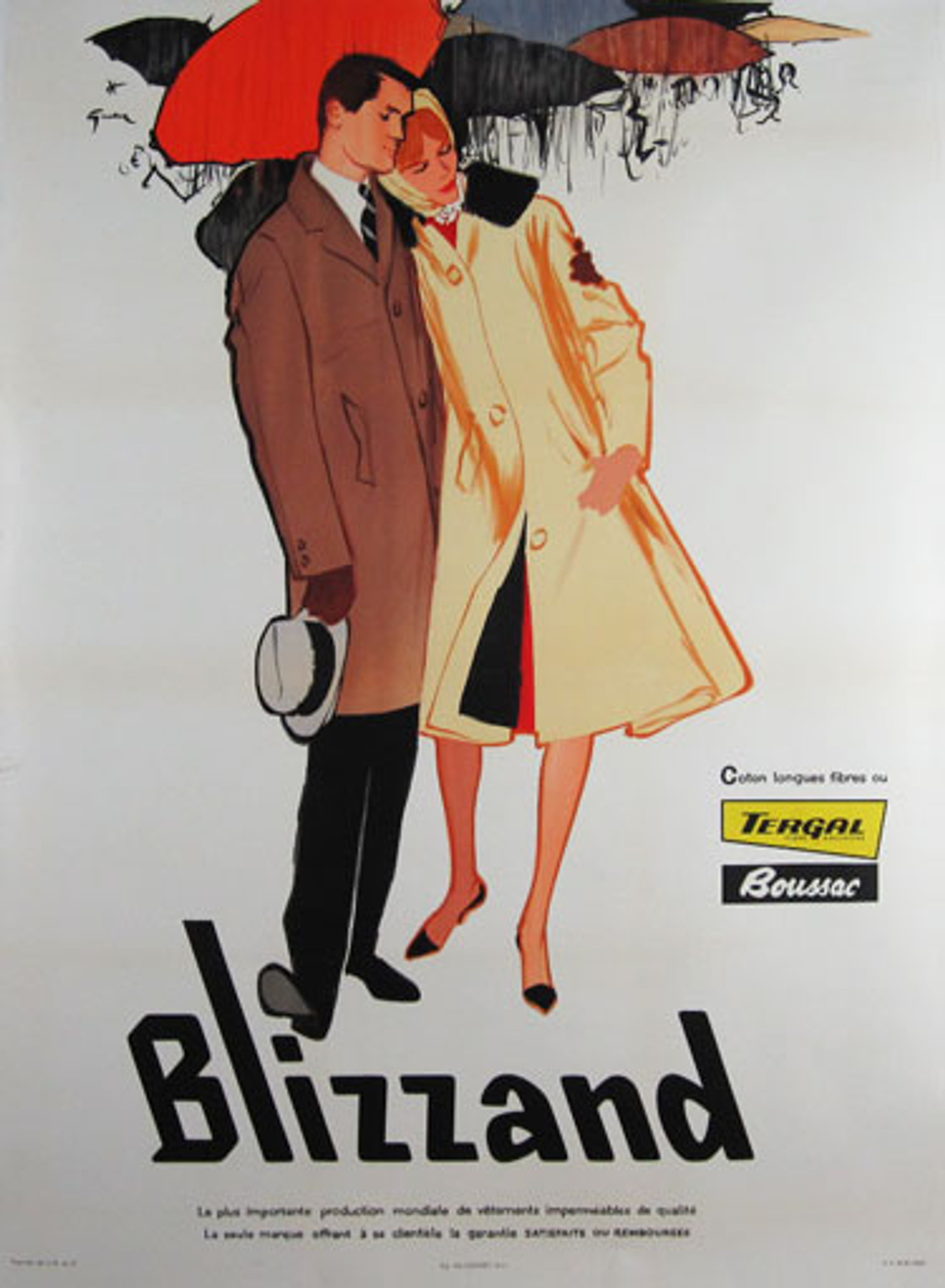
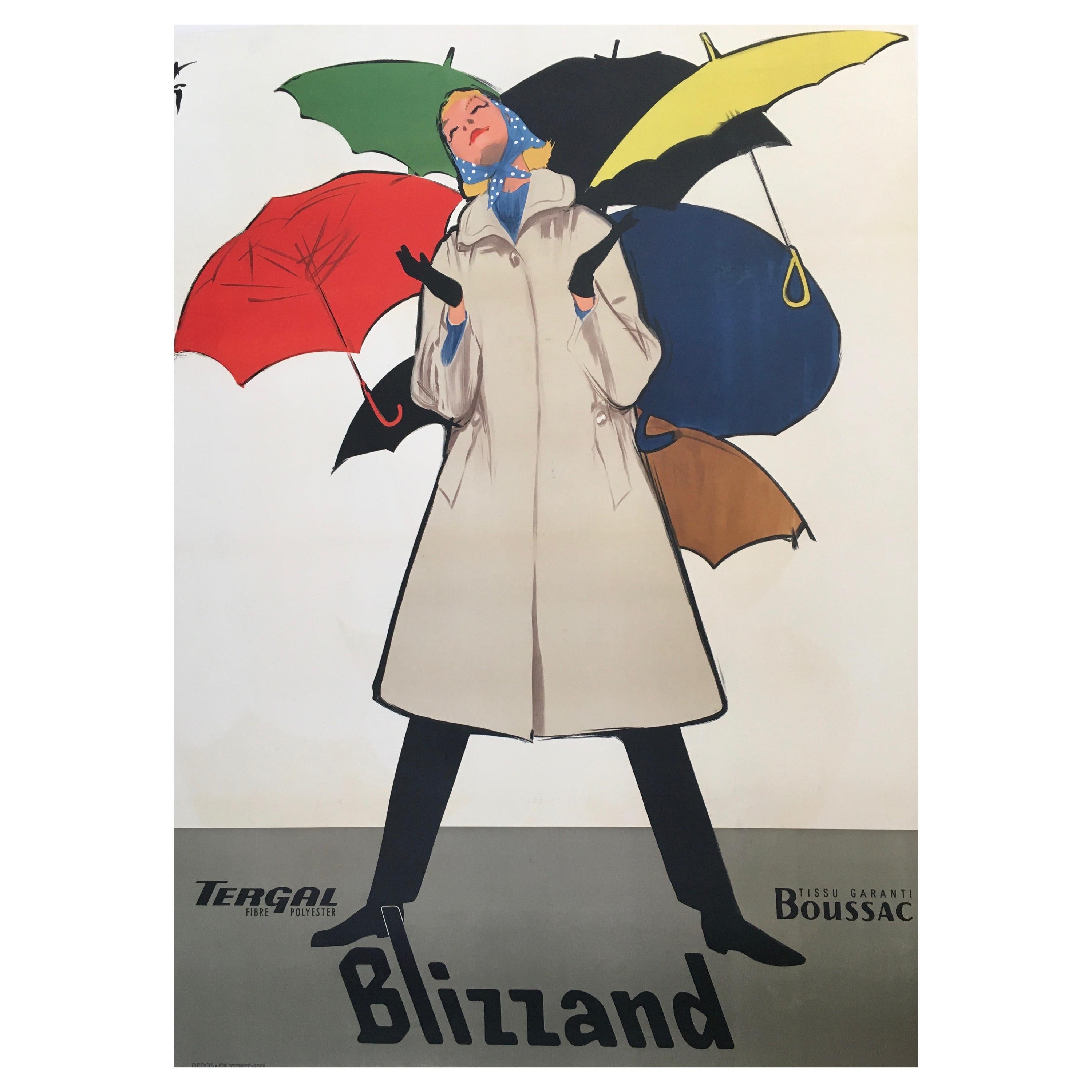





Fashion is a concept store l Créateurs & Industriels

Andrée Putman
Paris, October 1973
A new kind of shop is opening 45 rue de Rennes. It is called Créateurs & Industriels, C&I. This unique space of 800 m2 once was an ancient SNCF bus station. Andrée Putman completely redesigned it, keeping the ancient glass roof and using Parisian paving stones on the floor. She also selected the thousand and one items presented : clothes, furnitures, ceramics, accessories, jewels… all from new designers from all around the world. Sylvie Grumbach, as the PR, is the one who completed the curation with brand new fashion designers.
One can find inside many names of artists and designers soon to be famous : Elsa Peretti, Christiane Bailly, Betsey Johnson, Castelbajac, Claude Montana, Thierry Mugler, Issey Miyake, Emmanuelle Khanh, Pierre Paulin, Olivier Mourgue, Marc Held… There were also lithographs from Pierre Alechinski, Jean Messagier or Bram Van Velde.
C&I is also a place for events. Fashion shows of course but also, and more surprising, gardening events where one can buy plants such as tulip bulbs, pieces of a garden furniture exhibition staging.
Journalists are over the moon and clients are won over. It’s a triumph. Unfortunately many problems will arise… C&A will sue C&I because the two brand names are too similar and bring confusion. C&I will then have to turn into a quite dull “Créateurs“. Adidas will sue C&I because Emmanuelle Khanh designed an exclusive 3 stripes shoe for C&I. A mould defect in a furniture collection from Marc Held sold by C&I will bring huge cash flow problems… And finally conflicts between investors will put an end to the adventure.
May be it was too soon…
![]()
C&I, 45 rue de Rennes, Paris
A new kind of shop is opening 45 rue de Rennes. It is called Créateurs & Industriels, C&I. This unique space of 800 m2 once was an ancient SNCF bus station. Andrée Putman completely redesigned it, keeping the ancient glass roof and using Parisian paving stones on the floor. She also selected the thousand and one items presented : clothes, furnitures, ceramics, accessories, jewels… all from new designers from all around the world. Sylvie Grumbach, as the PR, is the one who completed the curation with brand new fashion designers.
One can find inside many names of artists and designers soon to be famous : Elsa Peretti, Christiane Bailly, Betsey Johnson, Castelbajac, Claude Montana, Thierry Mugler, Issey Miyake, Emmanuelle Khanh, Pierre Paulin, Olivier Mourgue, Marc Held… There were also lithographs from Pierre Alechinski, Jean Messagier or Bram Van Velde.
C&I is also a place for events. Fashion shows of course but also, and more surprising, gardening events where one can buy plants such as tulip bulbs, pieces of a garden furniture exhibition staging.
Journalists are over the moon and clients are won over. It’s a triumph. Unfortunately many problems will arise… C&A will sue C&I because the two brand names are too similar and bring confusion. C&I will then have to turn into a quite dull “Créateurs“. Adidas will sue C&I because Emmanuelle Khanh designed an exclusive 3 stripes shoe for C&I. A mould defect in a furniture collection from Marc Held sold by C&I will bring huge cash flow problems… And finally conflicts between investors will put an end to the adventure.
May be it was too soon…

C&I, 45 rue de Rennes, Paris
Fashion is a battle field l Georgia O’Keeffe’s men’s suit

Georgia O’Keeffe & Ansel Adams by Ansel Adams
Georgia O’Keeffe was very close to photographers. She married Alfred Stieglitz and one of her best friend, with whom she shared her adoration of the natural world, was Ansel Adams. The two photographers, but also Cecil Beaton, Bruce Weber and others, made many beautiful portraits of her, showing her incredibly modern wardrobe and style. Her clothing was an essential part of her public image, an expression of her modernity. The numerous black and white photographs reveal her monochrome artist uniform, strong lines, restricted color palette, flat shoes, loose silhouette… All this came into focus in 2017, at the Brooklyn Museum in the exhibition “Georgia O’Keeffe : Living Modern“ (that inspired Maria Grazia Chiuri for her cruise collection at Dior the same year). Among all the garments presented, there was a bespoke black wool men’s suit that she commissioned in 1983 (she was 96) from Emsley in New York. She used to purchase her men’s suits from Knize (a Jewish Austrian tailor settled in NY in 1941) but since the shop closed in 1974, she turned to Emsley (Joe Emsley is famous for his tailoring for Miles Davis). Wearing pants with the matching jacket was a feminist attitude and a political act. Imagining her androgynous silhouette, plus the unisex hat she used to wear, may evoke another image, by August Sander, where 3 young men, in formal suits and tilted hats, stand on an open field. The 3 are said to go dancing in a nearby village. But the picture, taken in Germany in 1914, raises another dance. It is now known that they all went to war where one of them was killed. Similar look but different stories. One thing in common though : fighting. For Georgia O’Keefe, as for many other women of all times, a men’s suit is a battle dress.
![]()
![]()
![]()
![]()
Georgia O’Keeffe by Alfred Stieglitz
Georgia O’Keeffe Emsley suit by Gavin Ashworth
3 young farmers by August Sander
Georgia O’Keeffe in her men’s suit by Dan Budnik

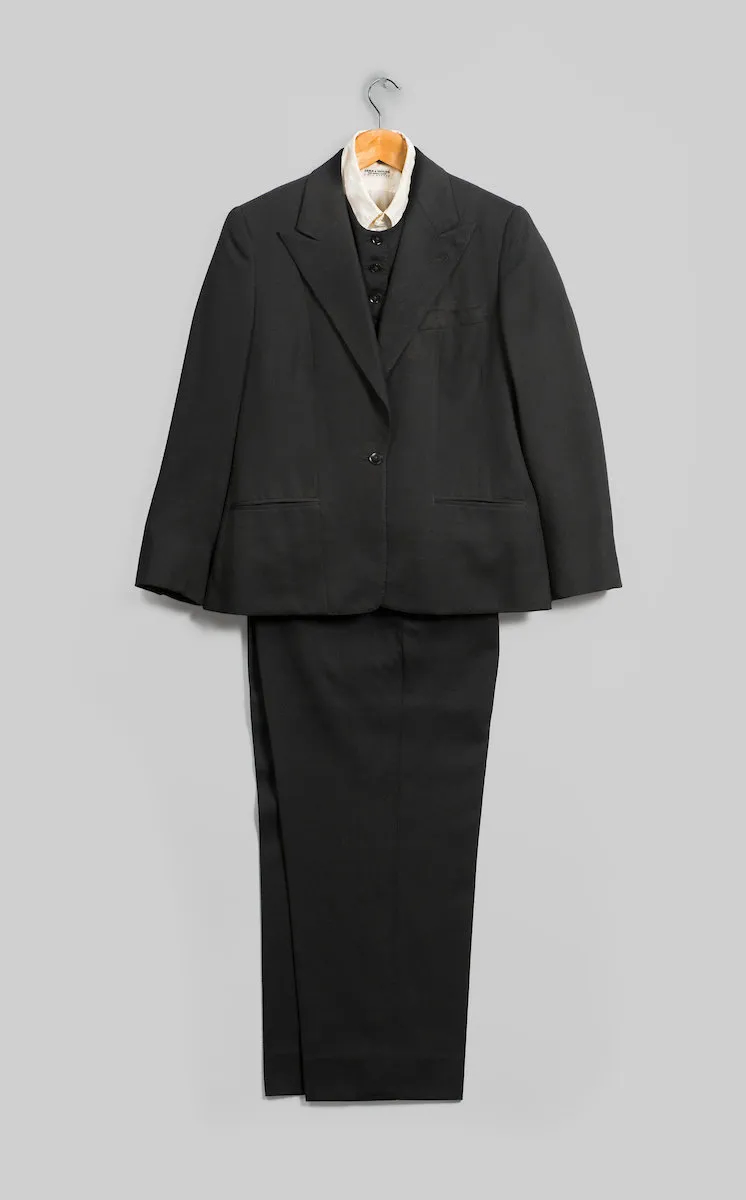


Georgia O’Keeffe by Alfred Stieglitz
Georgia O’Keeffe Emsley suit by Gavin Ashworth
3 young farmers by August Sander
Georgia O’Keeffe in her men’s suit by Dan Budnik
Fashion is a Phoenix l Helmut Lang, make it hard

Helmut Lang by Elfie Semotan
New York, September 2004, nobody knows that Helmut Lang’ salute at the end of his Spring-Summer 2005 show is a farewell. He made his decision long ago and it is final. He now wants to focus on art and because fashion business is going faster and faster, he has no extra time for his personal projects anymore. It’s now or never. He has to do it. He very simply tells his closest friends before his decision is made public. The announcement is a real unexpected bomb in the fashion world. Fashion insiders talk about an extreme loss and even grief. The entire fashion industry is mourning its beloved child.
For Lang, starts a long process of donation of his archive. It will be spread among 18 museums in the world. The MAK (Museum for Angewandte Kunst) in Vienna will own the most complete collection with more than 1000 original works and pieces.
But still, more than 8000 pieces remain in Lang’s studio in NY when a fire breaks out in February 2010. Most of them are damaged by smoke and water. The building must be evacuated. This is when the idea comes to use the damaged archives as a raw material. It took 6 months and many unsuccessful attempts before a shredding machine is rented and every single piece thrown into it with eyes shut and no remorse : Haute Couture, fur coats, evening gowns, street clothing, bags, jewels, shoes…
A strong and radical act inspired by Louise Bourgeois : “materials are just materials, and they are here to serve me”. Destruction can be a creative act : 150 column sculptures will emerge from the precious material, 25 years of work, pigment and resin. Helmut Lang’s Make It Hard was first presented during the summer 2011 at The Fireplace Project in East Hampton.
![]()
![]()
![]()
![]()
Burnt archive by Elfie Semotan
Material close-up at The Fireplace Project, East Hampton, 2011
Installation at Sperone Westwater Gallery, NY, 2015
Cecilia Chancellor in the 90’s
For Lang, starts a long process of donation of his archive. It will be spread among 18 museums in the world. The MAK (Museum for Angewandte Kunst) in Vienna will own the most complete collection with more than 1000 original works and pieces.
But still, more than 8000 pieces remain in Lang’s studio in NY when a fire breaks out in February 2010. Most of them are damaged by smoke and water. The building must be evacuated. This is when the idea comes to use the damaged archives as a raw material. It took 6 months and many unsuccessful attempts before a shredding machine is rented and every single piece thrown into it with eyes shut and no remorse : Haute Couture, fur coats, evening gowns, street clothing, bags, jewels, shoes…
A strong and radical act inspired by Louise Bourgeois : “materials are just materials, and they are here to serve me”. Destruction can be a creative act : 150 column sculptures will emerge from the precious material, 25 years of work, pigment and resin. Helmut Lang’s Make It Hard was first presented during the summer 2011 at The Fireplace Project in East Hampton.

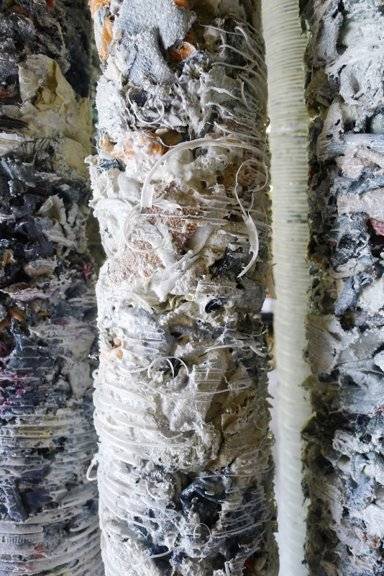

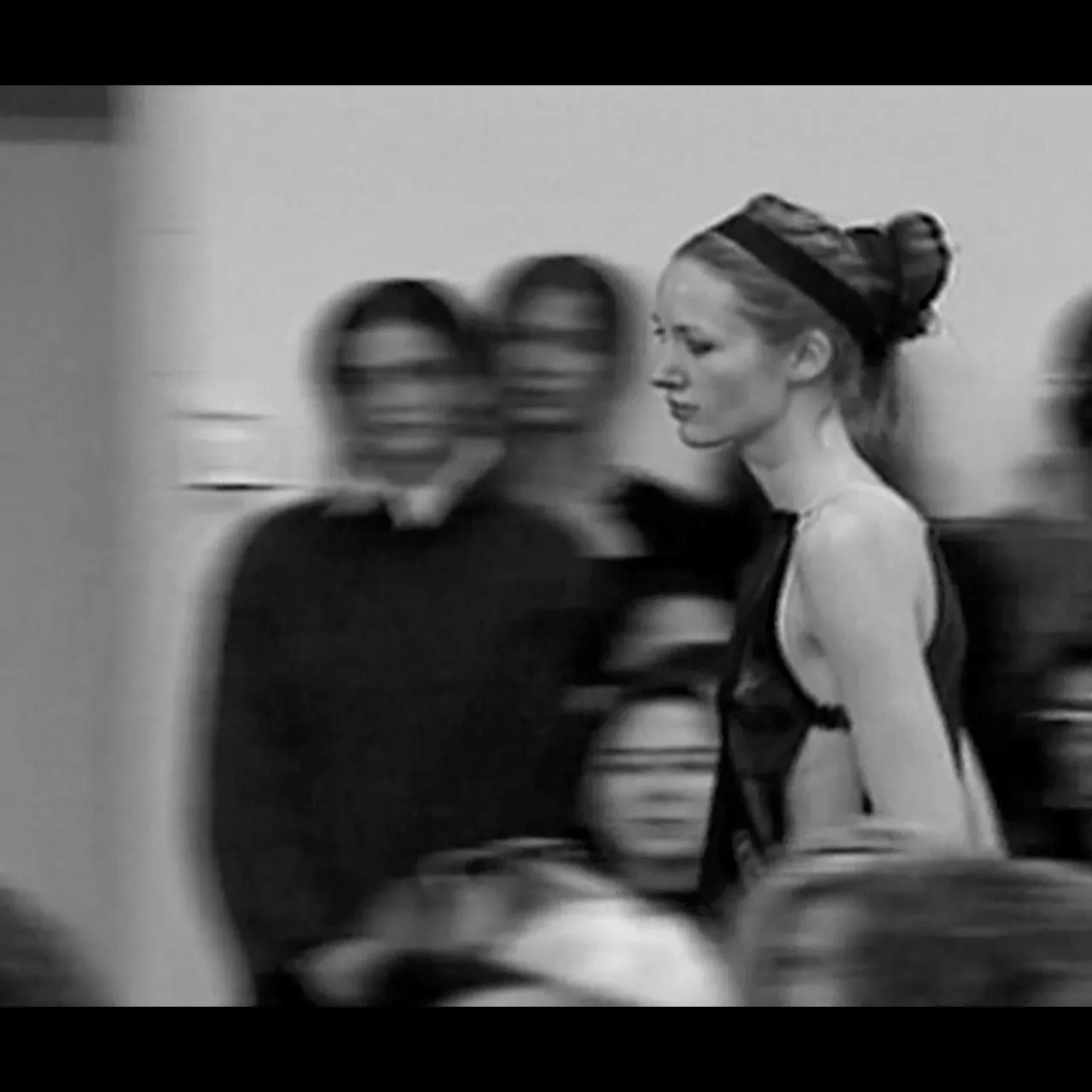
Burnt archive by Elfie Semotan
Material close-up at The Fireplace Project, East Hampton, 2011
Installation at Sperone Westwater Gallery, NY, 2015
Cecilia Chancellor in the 90’s
Fashion is a precious “plissé“ l The Fortuny Delphos dress

Tina Chow by Herb Ritts
Tina Chow was considered an influential style icon of the 80s, hanging out with Andy Warhol and Jean-Michel Basquiat, among other beautiful people. She was definitely an aesthete. Half American, half Japanese, she was an exquisite mix, able to wear a white t-shirt and a men’s cardigan with the same elegance than a Saint Laurent Haute Couture piece. Loulou de la Falaise used to say : “What makes Tina so fascinating is that her soul shines through her eyes and her entire person. Her elegance has nothing to do with fashion. Actually, she wears the same things over and over again, but she makes unusual mixes, with humour and imagination. She can wear something with no value at all with sumptuous jewelry, something a bit crazy with something very precious… One of her mix that seduced me the most : a Queen of England corselet worn with an old men’s cashmere cardigan. She knows how to add magic to everything she touches. With her, everything is a secret within a secret. Again it’s her soul, full of oriental mysteries.“
Tina knew where to find beauty. Long before they were a hit, she collected the fabulous silk dresses from Mariano Fortuny. The Spanish couturier settled in Venice in 1888 (the Fortuny Palace there is definitely worth a visit). Fortuny was a very zealous advocate for liberating the female form and believed in the ultimate luxury : comfort. He invented the Delphos dress in 1909, using his best-kept secret, the “pleats please“ of the beginning of the 20th century. Inspired from ancient Greece, the dress became famous thanks to its exceptional kind of pleated-undulated silk. It can be rolled up, crumpled and packed in a small box, its pleats will always return to its original shape when unfolded. Tina owned several of them that she treasured, keeping them carefully rolled and wrapped in rice paper, only taking them out of their boxes to wear them for rare special occasions such as an intimate dinner.
Tina Chow became a very talented jewelry designer (we will come back to this in another post). She died from HIV in 1992, she was 41.
![]()
![]()
![]()
Tina Chow Polaroid by Antonio Lopez
Painting : Miss Muriel Gore in a Fortuny dress, by Sir Oswald Hornby Joseph Birley, 1919
Tina knew where to find beauty. Long before they were a hit, she collected the fabulous silk dresses from Mariano Fortuny. The Spanish couturier settled in Venice in 1888 (the Fortuny Palace there is definitely worth a visit). Fortuny was a very zealous advocate for liberating the female form and believed in the ultimate luxury : comfort. He invented the Delphos dress in 1909, using his best-kept secret, the “pleats please“ of the beginning of the 20th century. Inspired from ancient Greece, the dress became famous thanks to its exceptional kind of pleated-undulated silk. It can be rolled up, crumpled and packed in a small box, its pleats will always return to its original shape when unfolded. Tina owned several of them that she treasured, keeping them carefully rolled and wrapped in rice paper, only taking them out of their boxes to wear them for rare special occasions such as an intimate dinner.
Tina Chow became a very talented jewelry designer (we will come back to this in another post). She died from HIV in 1992, she was 41.



Tina Chow Polaroid by Antonio Lopez
Painting : Miss Muriel Gore in a Fortuny dress, by Sir Oswald Hornby Joseph Birley, 1919